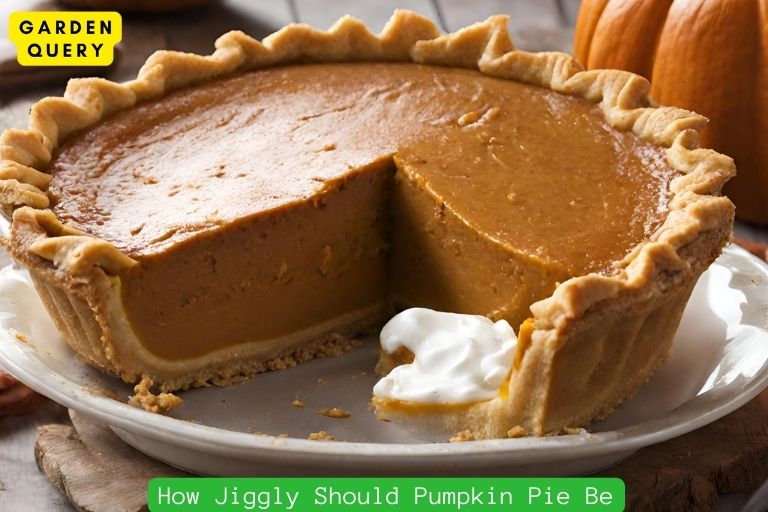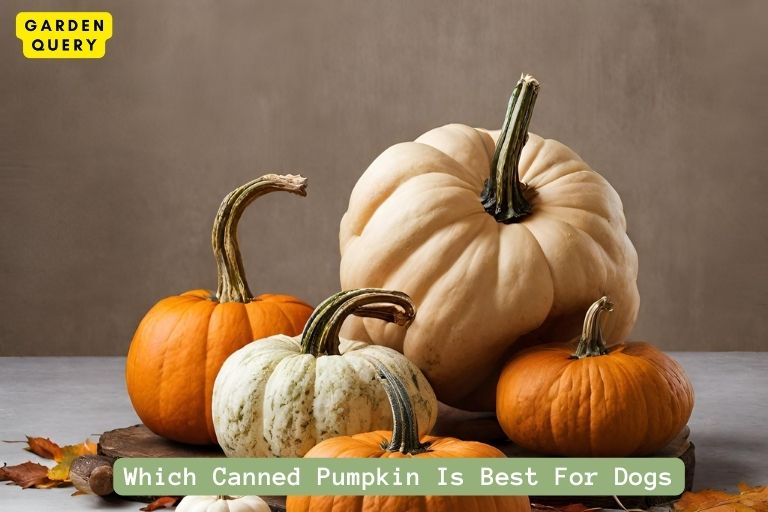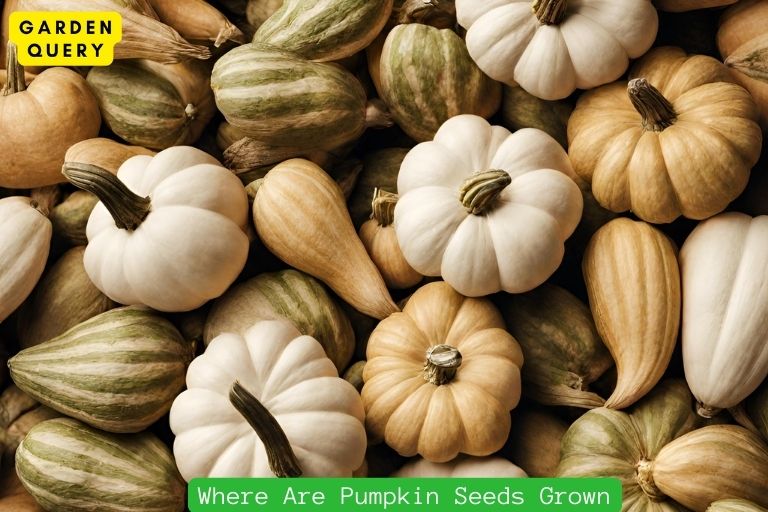How Jiggly Should Pumpkin Pie Be?
How Jiggly Should Pumpkin Pie Be?
Why the texture of pumpkin pie matters
When it comes to pumpkin pie, the texture plays a crucial role in determining whether it’s a culinary delight or a disappointment. The perfect pumpkin pie should have a balanced and pleasing jiggliness that adds to the overall eating experience. Achieving the right texture is essential to ensure a smooth and creamy filling that melts in your mouth.

Factors determining the jiggliness of pumpkin pie
Several factors contribute to the jiggliness of pumpkin pie. These include the following:
- Doneness: Properly cooking the pumpkin pie is crucial for achieving the ideal texture. Overcooking can result in a firmer pie, while undercooking may make it too jiggly and unset. The pie should be baked until the filling is set but still slightly jiggly in the center.
- Ingredients: The ingredients used in the pumpkin filling play a significant role in determining its firmness. A blend of pumpkin puree, eggs, cream, sugar, and spices creates a smooth consistency with just the right amount of jiggle.
- Ratio: The proportions of the ingredients can affect the jiggliness of the pie. Adjustments to the amount of eggs, cream, or pumpkin puree can impact the overall texture. Experts recommend following a trusted recipe to ensure the perfect balance.
- Cooling and setting: Once the pumpkin pie is baked, it needs time to cool and set properly. Cooling allows the filling to firm up and reach the desired consistency. It is recommended to refrigerate the pie for a few hours or overnight before serving.
Remember, the jiggliness of pumpkin pie should be subtle and not watery or loose. It should hold its shape when sliced but still have a smooth and creamy texture that is not overly firm. The perfect pumpkin pie strikes a balance between a firm structure and a delicate wobble.
In conclusion, the texture of pumpkin pie matters because it affects the overall eating experience. Achieving the right amount of jiggliness is crucial for a smooth and creamy filling that delights the taste buds. Factors such as doneness, ingredients, ratio, and cooling all contribute to the perfect jiggliness. So, whether you prefer your pumpkin pie with a little more wiggle or a firmer structure, finding that balance will leave everyone wanting more.
Jiggly vs Firm Pumpkin Pie
When it comes to pumpkin pie, there is often a debate about the ideal texture. Should it be jiggly or firm? The answer ultimately depends on personal preference, but there are advantages to both options.
The debate: preference for jiggly pumpkin pie
Many people prefer their pumpkin pie to have a jiggly texture. This can be attributed to a few reasons:
- Traditional appeal: Jiggly pumpkin pie is often associated with the classic homemade pie that grandma used to make. It brings a sense of nostalgia and comfort, making it a popular choice for many.
- Smooth and creamy: A jiggly pumpkin pie typically has a smooth and creamy filling. This texture is achieved by using ingredients like pumpkin puree, condensed milk, and eggs. The result is a luscious and silky filling that melts in your mouth.
- Aesthetic appeal: The jiggly texture of the pie can be visually appealing, especially when it is plated and served. It adds a playful element to the dessert and can enhance the overall dining experience.
Advantages of a firm pumpkin pie texture
On the other hand, some people prefer their pumpkin pie to have a firmer texture. Here are a few advantages of opting for a firmer pie:
- Easier to slice: Firm pumpkin pie holds its shape better, making it easier to slice and serve. This can be particularly helpful when hosting gatherings or events where presentation is important.
- Less messy: A firm pumpkin pie is less likely to collapse or ooze when sliced. This means less mess on the plate and a cleaner eating experience.
- Texture contrast: Some people enjoy the contrast between a firm crust and a smooth, creamy filling. The firmer texture of the pie allows for a satisfying bite that incorporates both the crust and the filling.
It’s important to note that achieving the desired texture of a pumpkin pie can vary depending on the recipe and baking techniques. Some factors that can affect the texture include the ratio of ingredients, the baking time, and the use of a water bath during baking.
In the end, whether you prefer a jiggly or firm pumpkin pie is a matter of personal taste. Both options have their own unique appeal and can be equally delicious. So, the next time you indulge in a slice of pumpkin pie, savor the flavor and savor the texture that brings you joy.
Achieving the Perfect Jiggly Pumpkin Pie
When it comes to pumpkin pie, there’s one characteristic that many bakers strive for – jiggly perfection. That gentle wiggle in the center of a pumpkin pie is not only visually appealing, but it’s a sign that the pie is cooked just right. But how jiggly should pumpkin pie really be? Let’s dive into the key ingredients and baking techniques that can help you achieve the perfect jiggliness.
Key ingredients for a jiggly pumpkin pie
- Pumpkin Puree: Using high-quality pumpkin puree is essential. Opt for canned pumpkin puree made from 100% pure pumpkin without any added sugars or spices. This ensures that you have the right consistency for a jiggly pie.
- Eggs: Eggs are responsible for the custard-like texture of pumpkin pie. The ratio of eggs to other ingredients is crucial. Follow a recipe that calls for a sufficient number of eggs, usually around 3 to 4, to achieve the desired jiggly consistency.
- Evaporated Milk: Adding evaporated milk to your pumpkin pie filling gives it a rich and creamy texture. The moisture from the evaporated milk helps create that delicate jiggle. If you prefer a lighter texture, you can use half-and-half or whole milk instead.
Baking techniques to enhance jiggliness
- Don’t overmix: When combining the ingredients for your pumpkin pie filling, be careful not to overmix. Overmixing can introduce too much air into the batter, resulting in a denser texture instead of a jiggly one.
- Use a water bath: Place your pie dish in a larger baking pan, and then pour hot water into the larger pan, surrounding the pie dish. This water bath helps to distribute heat evenly and prevent the edges of the pie from cooking faster than the center. The controlled and gentle heat ensures that the pie sets evenly without becoming too firm.
- Bake until set but still jiggly: The key is to bake the pie until it is set around the edges but still slightly jiggly in the center. To test for doneness, gently tap the side of the baking dish. If the center moves slightly, it is ready. Remember that the pie will continue to set as it cools.
- Cooling and chilling: After removing the pie from the oven, allow it to cool completely at room temperature. Then, refrigerate the pie for at least 4 hours or overnight. Chilling helps the pie to fully set and develop that desirable jiggle.
So, how jiggly should pumpkin pie be? It should have a gentle, delicate jiggle in the center while maintaining a firm, set crust and edges. By using high-quality ingredients and following these baking techniques, you can achieve the perfect jiggly pumpkin pie that will impress your family and friends this fall season. Enjoy!
The Science Behind the Jiggle
When it comes to pumpkin pie, the texture is key. Some people prefer a firm and dense pie, while others enjoy a lighter and jiggly consistency. But have you ever wondered why pumpkin pie can vary in terms of how jiggly it is? Let’s delve into the science behind the jiggle.
Understanding the role of moisture content
One of the crucial factors that influence the jiggliness of pumpkin pie is its moisture content. Pumpkin contains a significant amount of water, and when combined with other ingredients, this moisture affects the final texture of the pie. A higher moisture content can result in a softer, more jiggly pie, while a lower moisture content can lead to a firmer and denser texture.
To adjust the moisture content of your pumpkin pie, you can make a few modifications to your recipe. Adding more pumpkin puree or using a higher proportion of liquid ingredients, such as milk or cream, can increase the overall moisture content and create a softer, jigglier pie. On the other hand, reducing the amount of liquid or adding ingredients like eggs or starches can help create a firmer texture.
Effect of temperature on pumpkin pie texture
Temperature also plays a crucial role in determining the jiggliness of pumpkin pie. When the pie is baked, it undergoes a set of chemical reactions, including the coagulation of proteins and gelatinization of starches. These reactions contribute to the overall structure and texture of the pie.
If you prefer a firmer pumpkin pie, you can increase the baking time and temperature. This longer baking time allows the proteins to fully coagulate and the starches to fully gelatinize, resulting in a denser texture. Alternatively, if you enjoy a jiggly pie, you can reduce the baking time and temperature, which leaves the proteins and starches with a looser structure, creating a softer and more jiggly consistency.
When it comes to serving the pie, the temperature can also affect its jiggliness. After baking, allowing the pie to cool and set at room temperature or in the refrigerator will result in a firmer texture. However, if you prefer a more jiggly pie, serving it warm or at a slightly higher temperature can give it a softer consistency.
In conclusion, the jiggliness of pumpkin pie is influenced by factors such as moisture content and temperature. Adjusting the proportion of liquid ingredients and controlling the baking time and temperature can help you achieve your desired texture. So, whether you prefer a firm and dense pie or a jiggly delight, understanding the science behind it can elevate your pumpkin pie experience.
Serving and Enjoying Pumpkin Pie
When it comes to pumpkin pie, there’s always a debate: how jiggly should it be? Some prefer a firmer texture, while others enjoy a pie that has a little more wiggle. So, how do you achieve that perfect level of jiggle in your pumpkin pie? Here are some tips and tricks to help you serve and enjoy a deliciously jiggly pumpkin pie.
Tips for cutting and serving jiggly pumpkin pie
- Chill it: After baking your pumpkin pie, allow it to cool completely and then refrigerate it for a few hours or overnight. This will help the filling set and make it easier to slice into neat, firm pieces.
- Use a sharp knife: When it’s time to cut the pie, use a sharp knife to ensure clean, smooth slices. The sharper the knife, the less likely it is to tear the pie crust or disrupt the filling’s texture.
- Warm the knife: If you find that the pie filling is sticking to the knife, try warming the blade under hot running water and wiping it dry before making each cut. The heat will help the knife glide through the filling without sticking.
- Serve with a pie server: A pie server or spatula is the perfect tool for lifting and serving your jiggly pumpkin pie without damaging the slices. Slide it underneath each piece, gently lift, and transfer it to a dessert plate.
Pairing options with jiggly pumpkin pie
Now that you have your perfectly jiggly pumpkin pie slices ready, it’s time to think about what to pair with them. Here are a few delicious options:
- Whipped cream: A dollop or two of freshly whipped cream is a classic choice for pumpkin pie. The light and airy texture of the cream perfectly complements the smooth and creamy filling.
- Vanilla ice cream: For a cold and creamy contrast to the warm pie, serve it with a scoop of vanilla ice cream. The combination of flavors is irresistible.
- Caramel sauce: Drizzle a rich and buttery caramel sauce over the slices of pumpkin pie for an added touch of sweetness. The caramel adds a delightful depth of flavor.
- Spiced nuts: Serve your jiggly pumpkin pie with a sprinkle of spiced nuts, such as candied pecans or roasted almonds. The crunch of the nuts adds a satisfying texture to each bite.
Remember, the level of jiggle in your pumpkin pie is a matter of personal preference. Whether you prefer a firmer or jigglier texture, these tips will help you achieve the perfect slice. Pair it with your favorite toppings, gather your loved ones, and savor every delicious bite of your homemade jiggly pumpkin pie.
- Best Therapists In Dallas - February 1, 2024
- Holly Willoughby Husband: Holly Willoughby’s Love Story - January 30, 2024
- Holly Willoughby Dress: 5 Style Secrets and 7 Must-Know Career Milestones - January 30, 2024





